
Silent Service is a submarine simulator video game designed by Sid Meier and published by MicroProse for various 8-bit home computers in 1985 and for 16-bit systems like the Amiga in 1987. A Nintendo Entertainment System version developed by Rare was published in 1989 by Konami in Europe and by Konami's Ultra Games subsidiary in North America. Silent Service II was released in 1990. Tommo purchased the rights to this game and published it online through its Retroism brand in 2015.

Falcon 4.0 is a combat flight simulation video game developed by MicroProse and published by Hasbro Interactive in 1998. The game is based around a realistic simulation of the Block 50/52 F-16 Fighting Falcon jet fighter in a full-scale modern war set in the Korean Peninsula. Falcon 4.0's dynamic campaign engine runs autonomously.

F-19 Stealth Fighter is a combat flight simulator developed and released in 1988 and 1990 by MicroProse, featuring a fictional United States military aircraft. It is the 16-bit remake of the 8-bit game Project Stealth Fighter, which was released for the Commodore 64 in 1987. It was also ported to the NEC PC-9801 in Japan only, and the DOS version was re-released on Steam distribution platform in 2015.

Gunship is a combat flight simulation video game developed and published by MicroProse in 1986. In the game, controlling a simulated AH-64 Apache helicopter, players navigate through missions to attack enemy targets and protect friendly forces. Commercially and critically successful, Gunship was followed by Gunship 2000 and Gunship!.

Chuck Yeager's Air Combat is a 1991 combat flight simulation video game by Electronic Arts. Chuck Yeager was a technical consultant in the game and his digitized voice is featured in the game, giving encouragement and praise before and after missions. The game is characterized for its balance of an action laden gameplay which focuses on classical dog fights and a simple yet realistic flight model.

Strike Commander is a combat flight simulation video game designed by Chris Roberts and released by Origin Systems for the PC DOS in 1993. Its 3D graphics-engine used both gouraud shading and texture-mapping on both aircraft-models and terrain, an impressive feat at the time. Significant plot elements were presented through in-game cut-scene animations, a hallmark storytelling vehicle from Chris Robert's previous Wing Commander games. Strike Commander has been called "Privateer on Earth", due to the mercenary role-playing in the game.
Combat flight simulators are vehicle simulation games, amateur flight simulation computer programs used to simulate military aircraft and their operations. These are distinct from dedicated flight simulators used for professional pilot and military flight training which consist of realistic physical recreations of the actual aircraft cockpit, often with a full-motion platform.
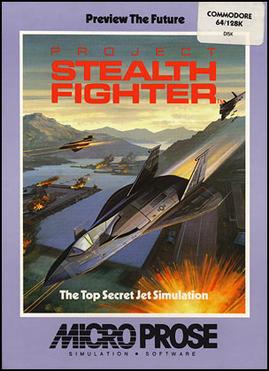
Project Stealth Fighter is a combat flight simulator released for the Commodore 64 in 1987 by MicroProse, featuring a fictional United States military aircraft. During the time of the game's release, there was heavy speculation surrounding a missing aircraft in the United States Air Force's numbering system, the F-19. Project Stealth Fighter was later renamed F-19 Stealth Fighter and was remade in 1988 for the 16-bit systems with much improved graphics.

F-15 Strike Eagle II is an F-15E Strike Eagle combat flight simulator released in 1989 by MicroProse and is the sequel of F-15 Strike Eagle. It was followed in 1992 by F-15 Strike Eagle III, the final game of the series.
The Falcon line of computer games is a series of simulations of the F-16 Fighting Falcon combat aircraft. The games, mostly published by Spectrum HoloByte, were noted for their high level of realism unseen in contemporary simulation games.

F-15 Strike Eagle is an F-15 Strike Eagle combat flight simulator originally released for the Atari 8-bit family in 1984 by MicroProse then ported to other systems. It is the first in the F-15 Strike Eagle series followed by F-15 Strike Eagle II and F-15 Strike Eagle III. An arcade version of the game was released simply as F-15 Strike Eagle in 1991, which uses higher-end hardware than was available in home systems, including the TMS34010 graphics-oriented CPU.
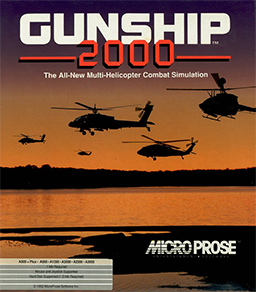
Gunship 2000 is a helicopter combat flight simulation video game developed and published by MicroProse as a follow-up to their earlier game Gunship. It was originally released in 1991 for DOS; this version received an expansion in 1992. The Amiga, PC-98, Amiga CD32 and PlayStation versions were released in 1993, 1994 and 1996 respectively. A sequel, Gunship!, was released in 2000.

Fleet Defender is a combat flight simulator published by MicroProse in 1994. The game uses the F-14B version of the F-14 Tomcat even where anachronistic because the developers found the original, underpowered F-14A unforgiving and "not much fun" in an entertainment flight simulator. An expansion pack, Fleet Defender: Scenario, and a port for the PC-98 were released in 1995.
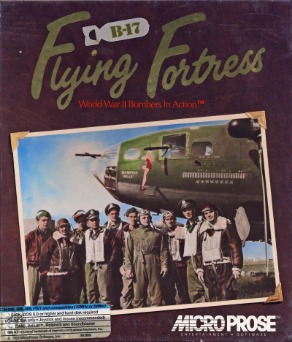
B-17 Flying Fortress: World War II Bombers in Action is a combat flight simulation video game developed by Vektor Grafix and published by MicroProse for the PC MS-DOS in 1992 and for the Amiga and Atari ST in 1993. The game simulates training, combat missions and sorties in a tour of duty in the Eighth Air Force of the United States Army Air Forces in the European Theater of Operations aboard a Boeing B-17 Flying Fortress heavy bomber during World War II. It was followed by B-17 Flying Fortress: The Mighty 8th in 2000.
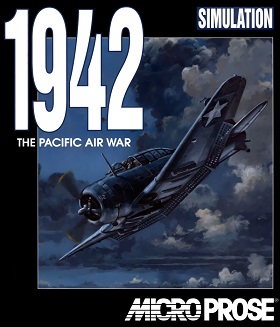
1942: The Pacific Air War is combat flight simulation developed and published by MicroProse for the PC on the DOS operating system in 1994. It is based on the U.S. and Japanese Pacific War conflict from 1942 to 1945. An expansion pack, 1942: The Pacific Air War – Scenario, was released in 1995. A sequel, European Air War, was released in 1998. Tommo purchased the rights to 1942 and digitally publishes it through its Retroism brand in 2015.
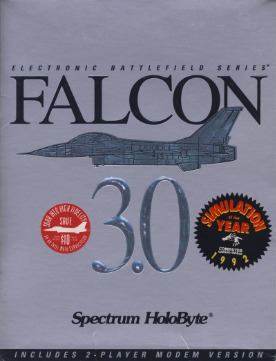
Falcon 3.0 is a combat flight simulator video game developed by Sphere Inc. and published by Spectrum HoloByte in 1991 as third official main entry in the Falcon series of the F-16 Fighting Falcon simulators.
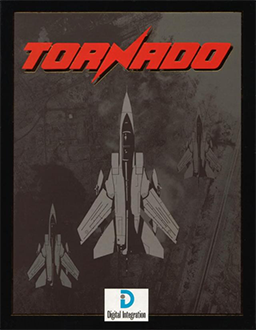
Tornado is a combat flight simulator video game by Digital Integration that models the Panavia Tornado. It was released in 1993 for DOS and Amiga. Tornado is one of the first flight simulations to offer head-to-head online dogfights.
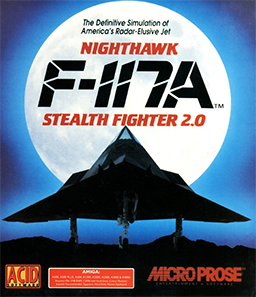
F-117A Nighthawk Stealth Fighter 2.0 is the 1991 remake of the 1988-1990 Cold War combat flight simulator video game F-19 Stealth Fighter by MicroProse, itself a remake of the 1987's Project Stealth Fighter. The original PC version was updated with a corrected aircraft model once the Lockheed F-117 Nighthawk was declassified and with 256-color VGA graphics instead of the original's 16-color EGA, among other changes.

Knights of the Sky is a World War I combat flight simulator designed by Jeff Briggs and published by MicroProse in 1990 for MS-DOS. Ports to the Amiga and Atari ST followed in 1991.

Hellcat Ace is a 1982 combat flight simulator video game written by Sid Meier for the Atari 8-bit family and published by MicroProse as their first program. The game was an immediate hit and led Meier to write several new releases for the Atari platform. Hellcat Ace was later ported to the Commodore 64 in 1983 and IBM PC in 1984.


















